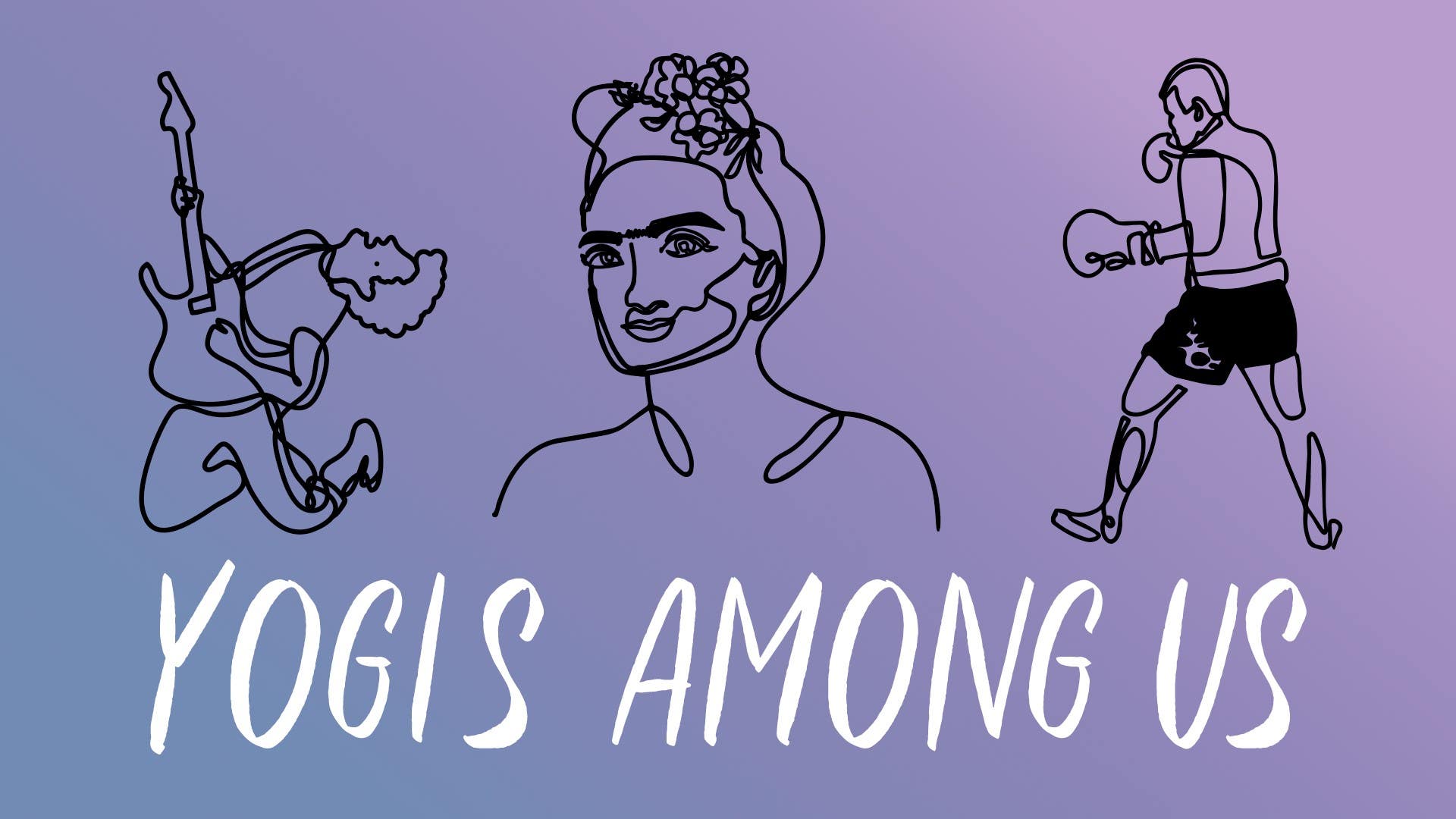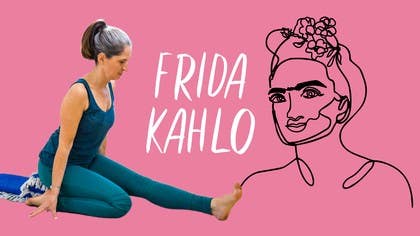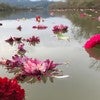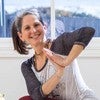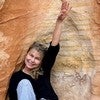Description
About This Video
Transcript
Read Full Transcript
Chapter 1
Talk
When Harriet Tubman was still a slave as a teenager, she was sweeping the walk one day at the plantation and a runaway slave ran by from a neighboring plantation. And the overseer of the neighbors came chasing after him and ordered Harriet to stop that slave in his tracks. She refused and the overseer became furious and he hurled a two pound metal disc in the direction of the runaway to stop the runaway, but it hit Harriet in the head instead. As a result, she had a lifetime of terrible headaches, pressure on the brain, seizures. She also had dreams and vivid visions and imagery and she believed that she heard messages spoken to her directly from God in these dreams and these visions.
This was a prime tool that she used when ten years later she quietly and determinedly walked away from her life as a slave. She made it to freedom, but she didn't stay. She went back and she went back and she went back 13 times to rescue 70 slaves. She rescued her family, she rescued friends and she rescued pretty much anybody who wanted freedom. She used these images and this guidance that she had from God to navigate the way through the network of the underground railroad naturally, obviously she had help from all of the stops along the way from all of the people who sheltered the runaways on their way to freedom.
She worked mainly in the winter when there was less of a chance of being spotted. She worked mainly at night and she had this uncanny ability as she was shepherding the slaves on their path to freedom to know when to stop, to know when to go, to know where to hide and which direction to run. She had the North Star to guide her and she had these messages that she believed were direct messages from the divine about how to find freedom. When the Civil War broke out 1860 Harriet goes back to work for the Union Army. She goes back into the South.
She's working, posing as a nurse and a cook which she did but she also was a spy. She was an armed scout and she did one of the most amazing feats of the Civil War. She led an expedition along the Combee River where she scouted out using her powers of perception and intuition where all of the mines had been laid by the Confederate forces. And so she was able to guide a ferry to the place at the Combee River where they staged an ambush against the rebel forces and shepherded 700 slaves on that ferry back through safe waters to their freedom. An amazing feat for a woman, for a former slave, for any human being really.
Frederick Douglass wrote a letter much later in a biography. He wrote a letter in her honor and he said, I toiled and labored and suffered our cause in public with lots of support, lots of public adulation and admiration and help and encouragement but you, Harriet, labored in private, in secret, in dark, in cold. I labored in the light of day, you labored in the dark of night. Harriet Tubman is quoted as saying, I heard their groans and their sighs, I have seen their tears and I would give every drop of blood in my veins to free them. She also said, I freed a thousand slaves but I could have freed a thousand more if only they had known that they were slaves.
In Sanskrit, we have this word for faith. The word is strada and broken down into pieces. It means shrad, which means truth or faithfulness and then da, D-H-A, which means to put or to place or to direct one's mind toward, to hold in that moment. If we can hold awareness in a faithful manner, freedom, really, according to the yogis, can be achieved and will be revealed, freedom from anything that we feel binds us and enslaves us. The yoga sutras address the idea of strada, of faith and of this holding of the truth and faithfulness in a steady and consistent manner.
We have this sutra from the first chapter, number 14, which says that when we are firmly grounded in the practice and held for a long time with pure devotion, then we will find our way. And then a few statements later, yoga sutra 1.20 tells us that we can attain bliss through maintaining this faith. The Bhagavad Gita tells us that yoga equals breaking the bonds of suffering. But in order to do this, we have to know who we are. We have to know how to act and we have to know what purpose we are intended to fulfill.
And to do this, we have to have conscious presence, which reveals devotion and faith and guidance from a wisdom that is so much larger than who we think we are. The, in fact, entire story of the Bhagavad Gita is a teacher, Krishna, instructing his student Arjuna about how to develop first this understanding of who he is, knowing the right choices to take in action, letting go of the way he thinks the story is supposed to end, and then having faith that it's going to end in the right way. So like Harriet Tubman, waiting in the cold dark with the lives of dozens in her hands, sitting in Eric Schiffman's words, silent counsel with the infinite, we can find freedom from anything that ties us down. In the closing words in the final chapter of the Bhagavad Gita, we are told, divinity dwells in the hearts of all creatures and whirls them around on the wheel of illusion. Run with all your strength to the divine and peace profound will be yours through its grace.
So what would a faith-based practice look like? What would a practice look like where we could pour our devotion into something and trust that we're receiving guidance to guide us in the right direction? The exploration will be at the third eye, the seat of intuition, the crown of the head, our connection to some sense of divine and an open heart that's willing to be devoted. It's willing to be connected and to give up a sense of limited control for the promise of wide open freedom. And we'll start standing.
Chapter 2
Practice
Grab a block, step your feet nice and wide, a wide enough stride that you feel like you have open space across the width of the pelvis, but not so far that you don't feel balanced. Check your feet, we want to have them parallel to each other so all 10 toes are looking forward. Hold your block in your hand, take a deep breath. As you inhale, lean back just a touch, lift the heart, raise the eyeballs and then as the exhale happens, fold forward with a nice lengthened spine and bring the block to the floor. Now if it's difficult to reach the block, then you can widen your stride a little bit and or you can double it up.
So there's no struggle here. So with your block in place, examining the feeling of the wide hips, the open thighs and the strength of the feet grounded, outer edges of the feet rooted to the mat, feeling the mounds of the toes making their firm clear contact, let the fold sink a little deeper. The sitting bones are rising a bit as the crown of the head is falling and then at a certain point, you'll do a negotiation between your forehead and the block. We want them to meet. So if that means widening the stride so you can lower your forehead, do that and or if that means turning the block taller, do that.
At a certain point, we want to have the third eye, the center of the forehead resting firmly on the block. So just this little bit of stimulation here is what we're looking for. The hands can do anything. You can hold the block firmly in your palms. You can walk the hands backwards and put your wide palms on the floor.
You could also put your hands on your hips. And if you do that, pulling the hips a little back further will give a nice feeling of lengthening in the side waist and the entire torso. As you're here breathing, letting the weight of the spine fall down to the block and as the forehead rests on the block, you can drag the skin of the forehead a little bit closer towards your nose rather than up toward the scalp. So a little down toward the nose for a quieting effect on the nervous system. Couple of breaths here.
After a while, you may notice that maybe the fold wants to go a little deeper. For that option. And then when you're ready, press into the floor or the block, step the feet together, hang the head for a moment, hang the arms and then slowly roll back up to stand, saving the head for last, standing in neutral for a few breaths. And then we'll come to the floor. So grabbing a rolled up blanket, the thickness of the roll depends on the openness of your chest.
If you tend to be a tight shouldered sort, then a thinner roll will serve you well. And if you tend to be a wide open expansive sort through the upper spine and the chest, then a thicker roll will be nice. Mine is about medium and it's going to go right behind the shoulder blades. So when you lie down, position yourself first on the elbows and then guiding the spine back so that you can feel the roll right behind the scapula. And then dropping the head back, extend the legs out in front, nice and straight and open up the arms so they're resting above the roll and the shoulders are dropping to the floor.
So from the standing position, we were stimulating the brow, the third eyes, energetic center of intuition, and now we're opening up the heart space, the energetic center of devotion. This can be done with your legs soft, at ease. And you can also do this with your legs active, feet flexed, perky toes pointing to the ceiling. You might feel yourself digging your heels into the floor if you have active legs and pressing the floor away from you, which gives you a little nice traction in the spine. And then you might feel the shoulders drop a little more snugly to the mat.
So here we are in this complete gesture of surrender tethering our awareness to the breath, to the sensation of the body being rooted safely, grounded to the earth. If there's any hint of pain or uncomfortable sensation in the lower back, you can bend your knees and rest them against each other. And you could also make the roll a little smaller. We have this luxury of not needing to suffer in silence. So make it good, make it work for you.
And then after one more breath here, on the exhale, bend the knees, shift the hips to one side, roll to the other side, using the hands to press firmly into the floor, giving leverage to bring yourself slowly up with nice control. And then we'll turn to table pose. You can dismiss the blanket and reintroduce one of your blocks. Placing the block just about under the chest in table pose, measuring out the distance between your hands and the placement of the wrists under the shoulders and the distance between the knees and the placement of the knees under the hips. Tuck the toes, tip the pelvis forward a little bit toward the floor so the sitting bones rise up toward the ceiling.
With your fingers spread wide and the palms rooted into the mat, push the floor away from you as you lift the hips and the spine and if you're lucky, the block will catch at the crown of your head. If it didn't, move it. You can tuck the chin so that you can feel more of the top of the head on the block and then tip the block towards you a little bit and breathe. So here we're bringing gentle pressure to the crown of the head, the energetic center that is associated with this connection to the divine, to the universal wisdom consciousness that pervades all. And in this practice we're looking for ways to open up in the body to trusting that divine wisdom.
And then when you're satisfied, sink your knees back to the floor, sit back on your heels, dismiss the block for the moment, readjust to being upright and then turn around. Now you'll want two blocks by your ankles. Start with your hands at your hips and feel the heaviness of the pelvis and pull it down so you're pulling the pelvis down and out of the waist and then lifting the ribcage up and out of the waist. Lifting the heart up, the shoulders back, lifting the head just gently enough without collapsing the back of the neck, so maintaining a slight drawing inward of the chin. You can look down over your right shoulder for the block, drop one arm toward it.
If it's difficult to reach, you can turn the block taller. And if that didn't feel right in your lower back, you can return your hand to your hip. Then extending the opposite arm up toward the ceiling, look toward your fingertips, look toward the sky and breathe. We're looking to keep the hips level and centered somewhat right over the knees so the upper thighs are two straight columns. Draw the lifted hand back to the hip, press off of the block or hand on the hip, lifting the ribcage back up right to center and then repeat on the other side.
Pulling the pelvis down and out of the waist, lifting the ribcage up and out of the waist, tip back. Look down toward your other ankle, drop the arm down. If the block is easy to reach, that's great. If it's not easy to reach, that's great too because you can make it taller and extend the other arm up. Good heart, lifted gaze, lifted reach, full, conscious, easy breath.
Return the hand back down, press off of whatever you're holding, hands to the hips. One more time, tip the pelvis back a little bit, pull it down out of the waist, lift the heart look up and here you may explore two hands down and then return back upright and bring your seat back to your heels. Put one of your blocks to the side and then spin around so you have the one block in front of you. Return to your table pose position where the block is just under the heart, fingers spread wide. Inhale and as you exhale, push the floor away from you, drop the hips back toward child's pose and then position the block so that it rests just under your forehead, returning again to this seat of intuition, the third eye, energetic center, breathing.
A nice choice for the arms here is to walk the elbows a little bit further forward, dropping the head back down, fingertips together behind the head. As you inhale, you might feel the back body expanding and the back side of the heart open spacious. As you exhale, allow a softness to occur in the belly. One more breath in and out and then walk the hands back, palms to the floor, push into the floor, giving leverage to roll your spine back upright. Pause once you get there, dismiss the block and then find a comfortable seat.
Take your palms open and receptive and then cover your eyes. And as you take a few breaths here, sitting with the spine nice and tall, tracing awareness of the breath entering through the crown of the head, descending all the way to the base of the spine and on the exhale, finding its path all the way back up to freedom. So without the use of clear vision or light, we still can know so much because we can trust, because we can have Shraddha, faith. And then gently taking the hands away from the eyes and then back together in front of the heart center. May all beings be happy, may all beings be free from suffering, may all beings be at peace.
Thank you for being here.
Yogis Among Us
Comments
You need to be a subscriber to post a comment.
Please Log In or Create an Account to start your free trial.
